Fishing Line Maintenance
Fishing Line Maintenance
We run nearly 300 fishing charters per year. This puts an insane demand on our tackle, our boat, and obviously our fishing line. We have tricks to maintain and maximize the life of all of our equipment and our fishing line is no different. Here are a few tips to make sure you get long life out of your fishing line and avoid losing quality fish due to negligence.
1. Check your guides! Always monitor the condition of the guides on your rods. This is important for both spinning rods and conventional rods. Even the smallest groove or chip in a fishing guide can instantly chafe or break your mainline. Check your guides before and after every trip and be sure to avoid bad habits such as putting rods on the deck, reeling hooks into the rod tip, or placing hooks or lures onto the part of the guides where the line touches.
2. Check your clips! Kite clips and outrigger clips can be major culprits when it comes to line damage. After extensive use, monofilament fishing line can actually create a groove in the metal arm of outrigger clips from constant friction. Check your outrigger clips on a regular basis to make sure the release arms are smooth. In addition, always watch for clip wraps! Whether you are sending a kite bait or taking seaweed off a troll bait, always be cautious to keep your line from wrapping around a the kite clip or outrigger clip. These tangles can cause the line to fray.
3. Avoid backlashes at all cost! Backlashes are a major way to compromise your line. The worst part is that backlashes can cause damage to your mainline deep down on your spool. A bad backlash while kite fishing for example can cost you several hundred yards of line. After just two backlashes, you may need to respool line that should have lasted months. To avoid backlashes, leave the clicker on while adjusting baits with novice anglers. In addition, make sure anglers are careful not to hit the rod in freespool while fighting a fish. This happens very frequently when a novice angler gets over excited while fighting a big fish. Always calm your anglers and make sure they don't knock the reel into freespool with their wrist in the middle of a crank. This happens during charters on a regular basis and can only be avoided with communication and practice.
4. Stretch your line! After hitting a school of fish or at the end of every trip, cut off all your terminal tackle and let the line go behind the boat while running. If you let out about 100 yards, the line will stretch and all the twist will be alleviated. This is especially important on spinning rods. Severe line twist can cause the line to break with much less pressure than usual. In addition, line twist can make it difficult to cast.
5. Fish top shots when necessary. During most styles of fishing, the top 100 feet of line usually take most of the abuse. When trolling for example, we like to use 25lb monofilament. We noticed however that a 50 foot top shot of 50lb monofilament helps reduce the abuse caused by lines crossing during multiple hook ups. Novice anglers are slow on their feet so a top-shot of heavier line can be used as a buffer to counter angler error.
6. Don't grow to attached to the top 50 feet of line. Most of our rods have 400-800 yards of line. With this being said, the top few feet usually take the most abuse. This is the line that gets the most twist, abrasion, exposure to ultraviolet light, and more. It is important to scrap the top layer of line with relative frequency, even if it appears to be in good shape. Your line is only as strong as its weakest link. It is better to have 700 yards of good line than 800 yards of line where the top 50 feet are trashed. Always scrap the top layers as necessary until it is time to respool.
7. Always change your line before tournament fishing. If you are ever entering a big money tournament, it is crucial to start with fresh line. You don't want to have line failure on a million dollar fish! It's better to be safe than sorry.
‹ Back











Comments